The Power of Natural Homemade Tomato Fertilizers: As a result of its adaptability and deliciousness, tomatoes are a highly prized addition to gardens all around the world. Fertilizers are frequently utilized by gardeners in order to cultivate tomato plants that are robust and abundant.
Natural tomato fertilizers that are created at home offer an alternative that is both environmentally conscientious and economical, despite the fact that commercial options are widely available. These nutrient-dense mixtures not only provide nourishment to the plants, but they also improve the health of the soil without the use of any potentially hazardous chemicals. This article will bring you through specific recipes and application methods, whether you are looking for the best fertilizer for tomatoes or you are looking for ways to produce your own fertilizer.
Incorporating components such as leftovers from the kitchen, weeds, and other organic materials allows you to create potent fertilizers that are specifically formulated to fit the requirements of your tomato plants while also adhering to environmentally responsible practices.
From Kitchen to Garden: Crafting Natural Organic Fertilizers for Tomatoes
Banana Peels: A Potassium-Rich Boost for Tomatoes
The peels of bananas are an excellent source of potassium, which is one of the key nutrients for the development of fruits and for increasing the size of tomatoes. Banana peels can be used as a fertilizer by first being chopped into little pieces and then being buried at the base of your tomato plants where they will be used.

The peels are broken down using this approach, which allows the nutrients to be released into the soil in a gradual manner. A great number of gardeners are devoted to the homemade fertilizer for tomato plants that incorporates banana peels due to the fact that it is both straightforward and efficient. It is recommended that you apply banana peel fertilizer every two to three weeks if you are following a tomato plant fertilizer schedule . This will guarantee that the potassium levels remain stable, which is beneficial for both flowering and fruiting. Additionally, when paired with calcium-rich fertilizers, banana peels good for tomato plants help prevent problems such as blossom end rot from occurring in tomato plants.
Epsom Salt Solution: Addressing Magnesium Deficiency Naturally
When dealing with magnesium shortages in tomato plants, epsom salt is the approach that is most commonly recommended. The yellowing of leaves is a common symptom of magnesium insufficiency, which is a nutrient that plays an important part in the process of photosynthesis.
To make a solution of Epsom salt, dissolve one tablespoon of Epsom salt in one gallon of water, and then apply the solution to your plants once a month once it has been created. Including fertilizing tomatoes with Epsom salts as part of a tomato plant fertilizer schedule is a method that is particularly useful for tomatoes. The usage of magnesium sulfate fertilizer tomatoes is a favorite among gardeners because it encourages the growth of lush green foliage and improves the general health of the plant. The use of Epsom salt in conjunction with the best organic fertilizer for tomato plants has the potential to dramatically boost plant growth.
Eggshells: Adding Calcium to Prevent Blossom End Rot
When it comes to preventing blossom end rot, which is a typical problem that affects tomato plants, calcium is absolutely necessary. Make a powder out of the crushed eggshells that have been dried out, and then sprinkle it around the base of your plants. Eventually, the eggshells will decompose, which will result in calcium being released into the soil.
Through the use of this slow-release technique, your plants will be provided with a consistent supply of calcium, which will reinforce their cell walls and improve the quality of their fruit. A great number of gardeners have discovered that the combination of eggshells good for tomatoes and other natural phosphorus for tomatoes sources produces remarkable results. In the event that you are pondering the question of what calcium fertilizer for tomatoes to employ, eggshells are a choice that is affordable and easily accessible.
Coffee Grounds: Providing Nitrogen for Leafy Growth
Coffee grounds are an excellent source of nitrogen, which encourages robust leaf growth and contributes to the establishment of healthy roots among plants. The only thing you need to do is sprinkle used coffee grounds around your tomato plants and then lightly mix them into the soil.

Not only does this improve the structure of the soil, but it also makes it more water-retaining and enriches the soil. People who are looking for homemade nitrogen for tomato plants will find that coffee grinds are a fantastic option. Coffee grounds, when put into a tomato fertilizer npk plan, contribute to the maintenance of nutrient levels that are optimally balanced. Additionally, the organic matter that is provided by coffee grounds improves homemade fertilizer for tomatoes in containers to a significant extent.
Compost Tea: A Liquid Gold for Tomato Plants
The process of steeping compost in water results in the production of a liquid fertilizer that is rich in nutrients. After adding a shovelful of compost to a pucket of water, let the mixture sit for a few days before trying to use it. To water your tomato plants, strain the liquid and use it as a source of water.
Because it contains a wide variety of nutrients, such as nitrogen, phosphorus, and potassium, this mixture is considered to be one of the best natural fertilizer for tomato plants that is currently accessible. A great number of gardeners consider compost tea to be an essential component of their guide to fertilizing tomatoes, particularly when it is implemented in conjunction with a secret tomato fertilizer recipe to achieve the highest possible output. Particularly useful for feeding tomato seedlings throughout the early phases of their development, it is an excellent method.
Fish Emulsion Fertilizer: A Protein-Packed Plant Food
An abundant source of nitrogen, phosphate, and potassium, fish emulsion fertilizer is a concentrated liquid that is created from fish waste. It is designed to be used in agricultural settings. You should apply it to your tomato plants every two to three weeks after diluting it in accordance with the recommendations on the packaging.
This particular fertilizer is perfect for tomato plants in pots since it provides nutrients in a timely manner without being too much for the roots to handle. Gardeners frequently use fish emulsion fertilizer for tomatoes in conjunction with other homemade tomato fertilizer recipes in order to guarantee that their tomatoes receive a complete nutrition. When it comes to the best fertilizer ratio for tomatoes , fish emulsion is an excellent option due to its balanced nitrogen, phosphorus, and potassium content.
The extract of seaweed is particularly rich in trace minerals and growth hormones, both of which are beneficial to the overall health of plants. Through the process of soaking dried seaweed in water for a few weeks, it is possible to produce seaweed extract. The solution should be diluted before being applied to your tomato plants once it is ready.
The use of this fertilizer is particularly beneficial for boosting flowering and strengthening resistance to damage from diseases. A growing number of people are looking for powerful natural tomato fertilizer recipes, and seaweed fertilizer for tomatoes is becoming increasingly popular. The use of seaweed extract as a component of a homemade fertilizer for tomato flowering fosters the development of many blooms and greater fruit sizes.
Wood Ash: A Source of Potash for Fruit Production
The ash that is produced from wood that has not been treated is a good source of potash, which helps ensure the production of fruit and improves its flavor. A thin layer of wood ash should be sprinkled around your tomato plants, but you should be careful not to apply too much of it because doing so can change the pH of the soil.
This potash fertilizer for tomatoes is used by a lot of gardeners since it helps them increase their harvests without using any artificial additions. The combination of wood ash and baking soda good for tomato plants results in the creation of an atmosphere that is balanced and conducive to optimal growth. This particular mixture is frequently suggested in tomato fertilizer recommendations as a means of producing tomatoes that are more flavorful and sweet.
Molasses: Feeding Soil Microbes for Better Nutrient Uptake
Molasses is a natural sweetener that also provides nourishment to the beneficial bacteria that live in the soil, which increases the availability of nutrients for your tomato plants. You should water your plants once every two to three weeks using a mixture that contains one tablespoon of molasses and one gallon of water.
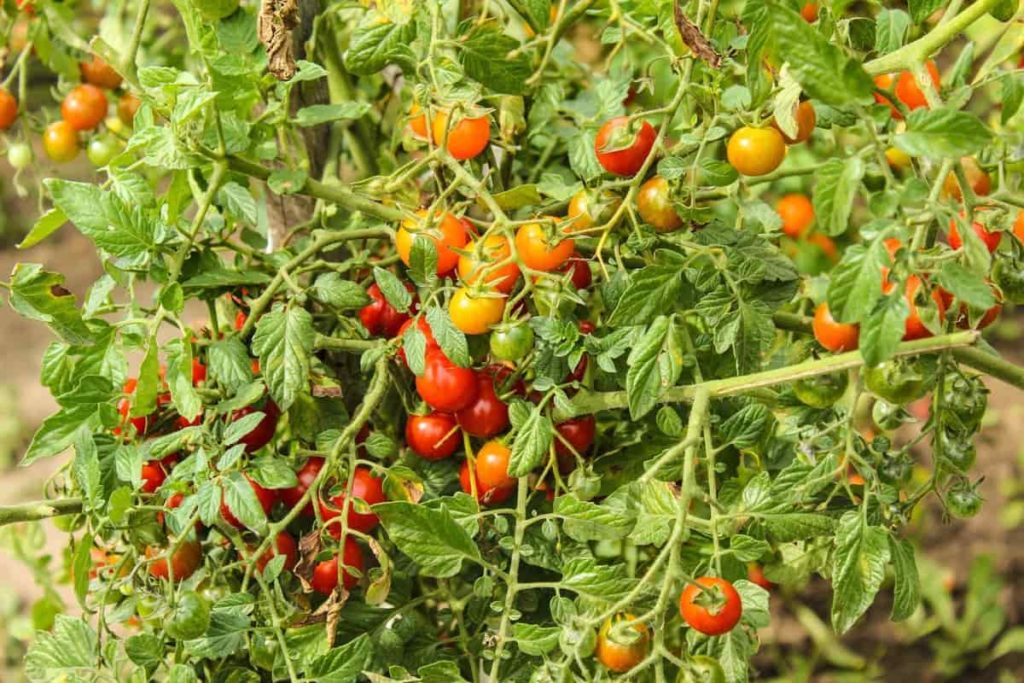
This promotes the activity of microorganisms, which in turn enhances the vitality of the soil and helps to maintain healthy root systems. There are a lot of gardeners who use molasses-based natural homemade tomato fertilizers as a supplement to their other homemade fertilizer for tomato plants methods inside their routines. When used in conjunction with slow release tomato fertilizer alternatives, molasses is an especially efficient soil amendment.
Grass Clippings: Green Manure for Tomato Beds
The decomposition of grass clippings is a rapid process that contributes nitrogen and organic matter to the soil. The grass clippings should be spread out in a thin layer around your tomato plants; however, you should avoid spreading them too thickly because this might contribute to the growth of mold.
This strategy is an excellent complement to strategies that involve low nitrogen fertilizer for tomatoes and is designed to replicate the advantages of traditional green manure. Grass clipping-based natural homemade tomato fertilizers are a popular choice among gardeners since they help reduce the amount of yard waste while also providing benefits to the plants they grow. The method of incorporating this strategy into your tomato fertilizer schedule guarantees that the soil will be consistently enriched.
Vinegar Solution: Adjusting Soil pH for Optimal Growth
A solution of diluted vinegar can assist in achieving the ideal balance of acidity for tomato plants, which flourish in soil that is somewhat acidic. Every few weeks, apply a mixture that is a mixture of one tablespoon of white vinegar and one gallon of water to your plants in a very small amount.
If your soil has a tendency to be too alkaline, this is especially helpful because inappropriate pH levels can make it difficult for nutrients to be absorbed by the plant. A vinegar solution is used in conjunction with liquid fertilizer for tomato seedlings by many gardeners in order to guarantee that the young plants begin their lives in the best possible conditions. Incorporating this strategy into a tomato plant fertilizer schedule helps to maintain the correct pH range, which in turn promotes healthier growth and higher yields.
Alfalfa Meal: Slow-Release Nutrition for Long-Term Benefits
Because it is a slow-release fertilizer that is loaded with nitrogen, phosphate, and potassium, alfalfa meal is an ideal choice for providing plants with sustained food. The alfalfa meal should be sprinkled around your tomato plants and then worked into the soil in a gentle manner.
Over the course of time, it decomposes, thereby supplying a consistent supply of nutrients that are necessary for the development of roots and the production of fruit. Due to the fact that it contains a balanced profile of nutrients, gardeners who are looking for the best fertilizer ratio for tomatoes frequently resort to alfalfa meal. The use of alfalfa meal in conjunction with the homemade tomato fertilizer recipe ensures that the soil will remain fertile over the long term and that plants will develop robustly.
Baking Soda Spray: Deterring Fungal Diseases Naturally
Baking soda has the ability to improve the flavor of fruit while also assisting in the prevention of fungal illnesses such as powdery mildew. An application of a solution consisting of one teaspoon of baking soda and one quart of water should be applied to the leaves of your tomato plants.
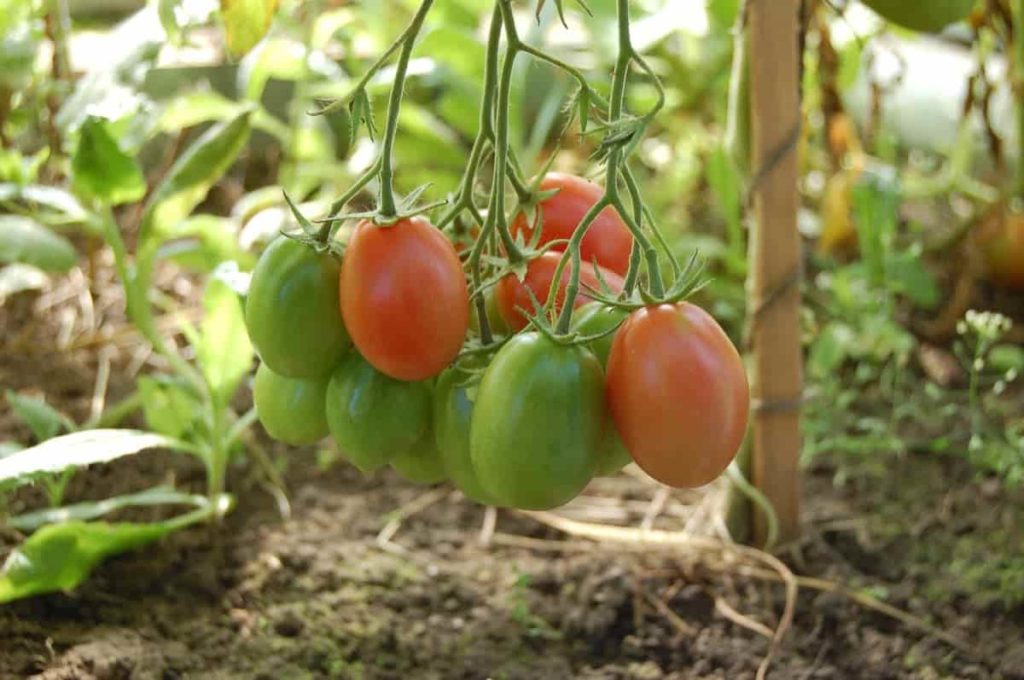
Not only does this safeguard the plants, but it also encourages the development of healthier plants. Many gardeners include baking soda good for tomato plants in their routines as part of a guide to fertilizing tomatoes. This is because baking soda is beneficial to tomato plants. This strategy is particularly effective when combined with other natural homemade tomato fertilizers in order to establish a holistic approach to the health of plants.
Worm Castings: Nature’s Perfect Plant Food
Worm castings are an excellent option for tomato plants since they are beneficial to the structure of the soil and contain a high concentration of nutrients. When you are transplanting tomatoes, add a handful of worm castings to the planting hole, or sprinkle them around plants that are already established elsewhere.
In this way, a concentrated quantity of nutrients is delivered to the roots, precisely where they are required. Worm castings are widely considered to be the best organic fertilizer for tomato plants because to the several advantages they provide, including enhanced water retention and increased microbial activity. When it comes to increasing yields, they are also an essential ingredient in a great number of secret tomato fertilizer formulas.
Herbal Infusions: Adding Diversity to Your Fertilizer Arsenal
Infusions created from herbs, such as those made from nettles or comfrey, provide tomato plants with a wide range of nutrients that are beneficial to their growth. The herbs should be steeped in water for a week, the liquid should be strained, and then the liquid should be diluted before being applied to your plants.
Infusions like these can be used as a supplement to other types of fertilizers and can supply trace minerals that improve the general health of plants. It is common practice to prescribe powerful natural tomato fertilizer recipes that use herbal infusions because of their capacity to increase flowering and fruiting. This is because herbal infusions are highly valued for their versatility.
Cornmeal: Boosting Beneficial Microorganisms
Cornmeal has the potential to encourage the reproduction of beneficial microorganisms in the soil, which in turn increases the amount of nutrients that are available to tomato plants. The tomato plants should be watered thoroughly once a tiny amount has been sprinkled around them.
This not only enhances the structure of the soil but also offers a healthier environment for the development of roots. As a novel and efficient method for preserving the vitality of the soil, cornmeal-based natural homemade tomato fertilizers are highly regarded by a significant number of gardeners.
Milk Spray: Providing Calcium and Protein
Milk includes calcium and proteins, both of which can be beneficial to tomato plants since they can prevent diseases and deter pests of the plant. You should spray the milk that has been diluted with water in a ratio of one to one onto the leaves of your tomato plants.
The plants are not only strengthened by this strategy, but they also experience healthier growth as a result of it. It is common practice to add milk spray as part of the homemade fertilizer for tomato flowering tactics. This is because milk spray is an inventive solution for numerous gardening issues.
Tea Bags: Recycling Kitchen Waste for Plant Health
Tea bags that have been used can be buried close to tomato plants in order to gradually release nutrients. Tea contains tannins and organic matter, both of which add to the fertility of the soil and improve its ability to retain water.
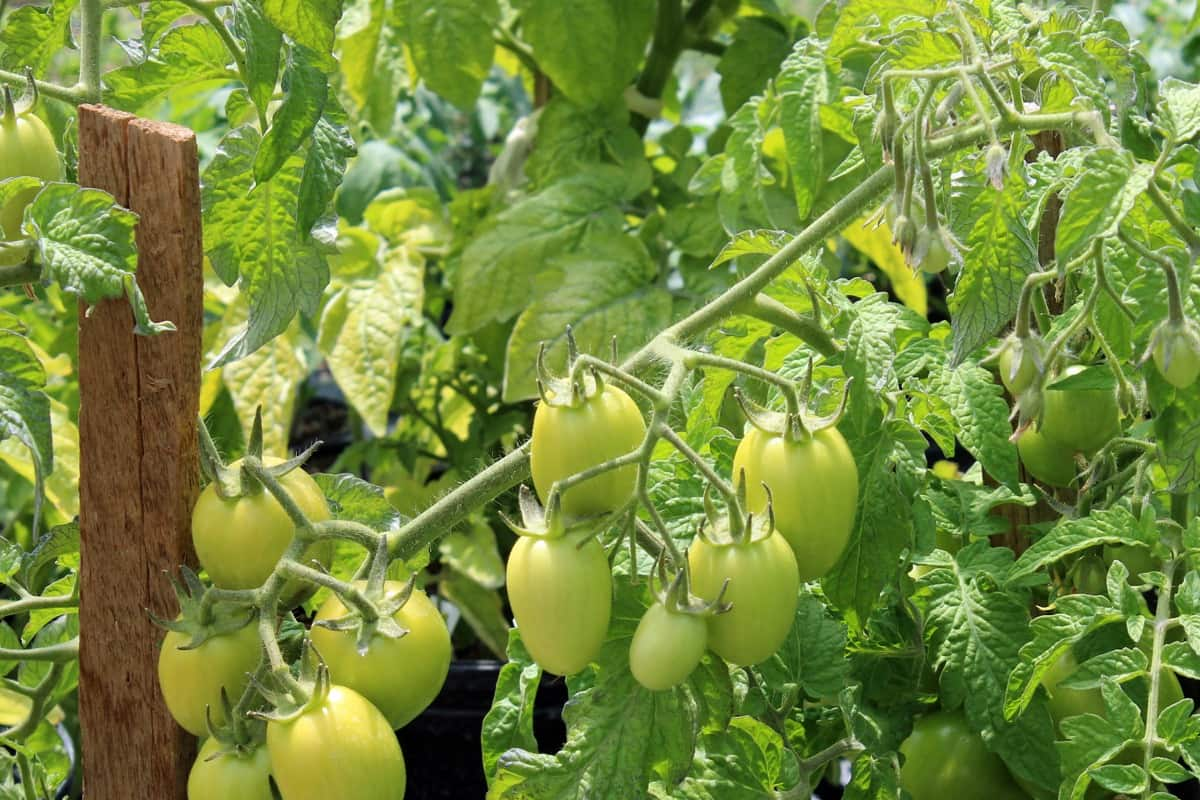
In addition to providing your plants with nourishment, this straightforward process is an efficient way to repurpose items from your home. Some gardeners who are looking for quick homemade tomato fertilizer choices have found that tea bags good for tomatoes are their preferred option.
Pine Needles: Acidifying Soil Naturally
Pine needles have the ability to reduce the pH of the soil, making them an excellent choice for tomato plants that thrive in acidic environments. Pine needles should be spread out in a layer around your plants, and then they should be allowed to disintegrate organically.
When it comes to natural homemade tomato fertilizers that are designed to enhance soil acidity without the use of synthetic additions, this method is an ideal alternative because it is environmentally benign.
Bone Meal: Supporting Root Development
The high phosphorus content of bone meal is beneficial to the development of roots and the production of fruit. To ensure that your tomatoes get off to a good start, incorporate it into the soil before planting them.
It is common practice to offer bone meal fertilizer tomatoes in tomato fertilizer recommendations because these tomatoes are essential for the early establishment of plants.
Kelp Meal: Enhancing Stress Resistance
The hormones found in kelp meal are responsible for the plant’s ability to endure stress and increase its general health. Douse your tomato plants with it and make sure to water them thoroughly.
Some of the recipes that are considered to be the best natural fertilizer for tomato plants contain this method, which is highly regarded for the resilience-enhancing features it possesses.
Charcoal: Improving Soil Drainage and Aeration
Your tomato garden would benefit greatly from the use of charcoal because it helps to enhance the structure of the soil and helps to retain moisture. To incorporate it into the soil, crush it into little bits and mix it in.
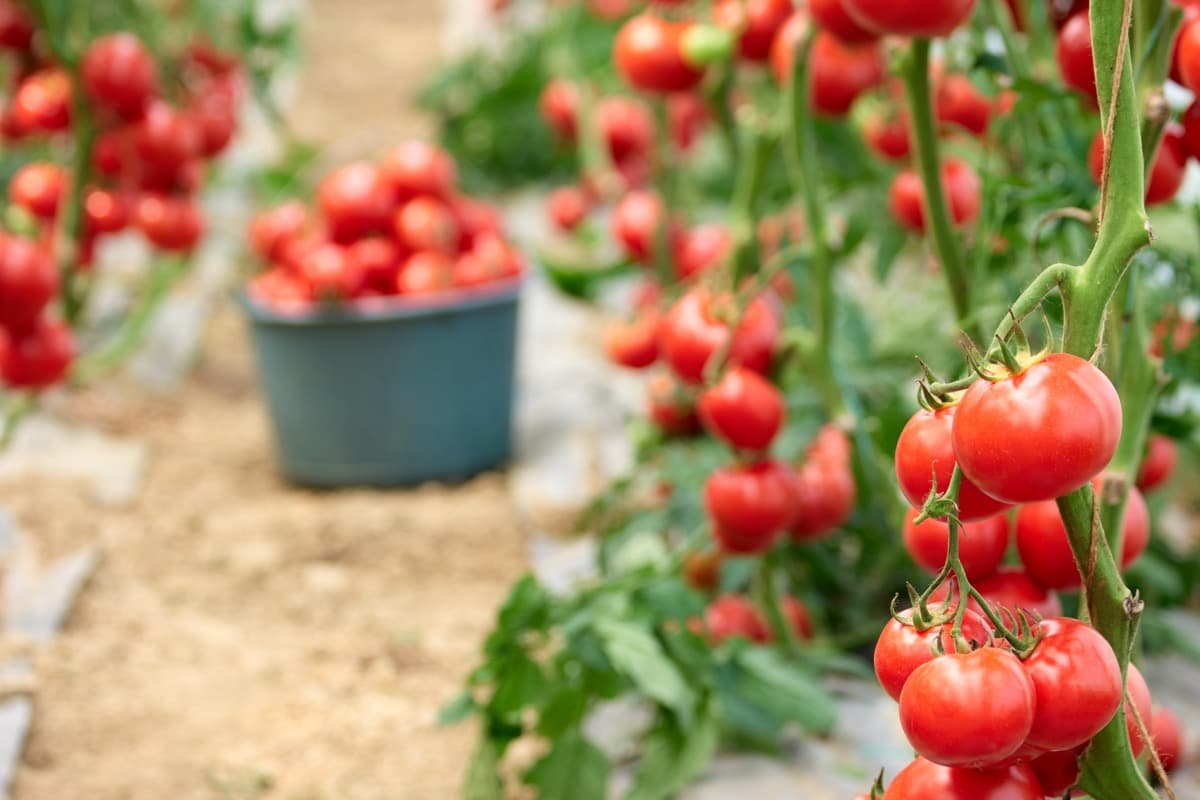
In order to improve growing conditions and prevent problems such as root rot, charcoal-based natural homemade tomato fertilizers are an environmentally responsible measure to take.
Gelatin: Supplying Amino Acids for Vigorous Growth
Amino acids are produced when gelatin is broken down, and these amino acids encourage aggressive growth and improve the quality of fruit. Gelatin should be dissolved in hot water, then they should be diluted and applied to their plants.
Gardeners who are looking for homemade fertilizer for tomato plants are becoming increasingly interested in this contemporary method of providing nutrients to plants.
Leftover Vegetable Water: Reusing Cooking Liquids
Tomato plants can benefit from the presence of vital nutrients that are present in the water that is used to boil vegetables. Your plants will benefit from the water once it has cooled down.
This useful strategy is an excellent way to preserve resources while simultaneously providing nourishment to your garden. The adding of leftover vegetable water to any homemade tomato fertilizer recipe is a straightforward yet efficient method of fertilization.
Blood Meal: A Nitrogen-Rich Boost for Leafy Growth
Nitrogen is essential for the growth of leafy greens and the overall vitality of plants, and blood meal is a rich supply of nitrogen. Then, water your tomato plants thoroughly once you have sprinkled it about them.
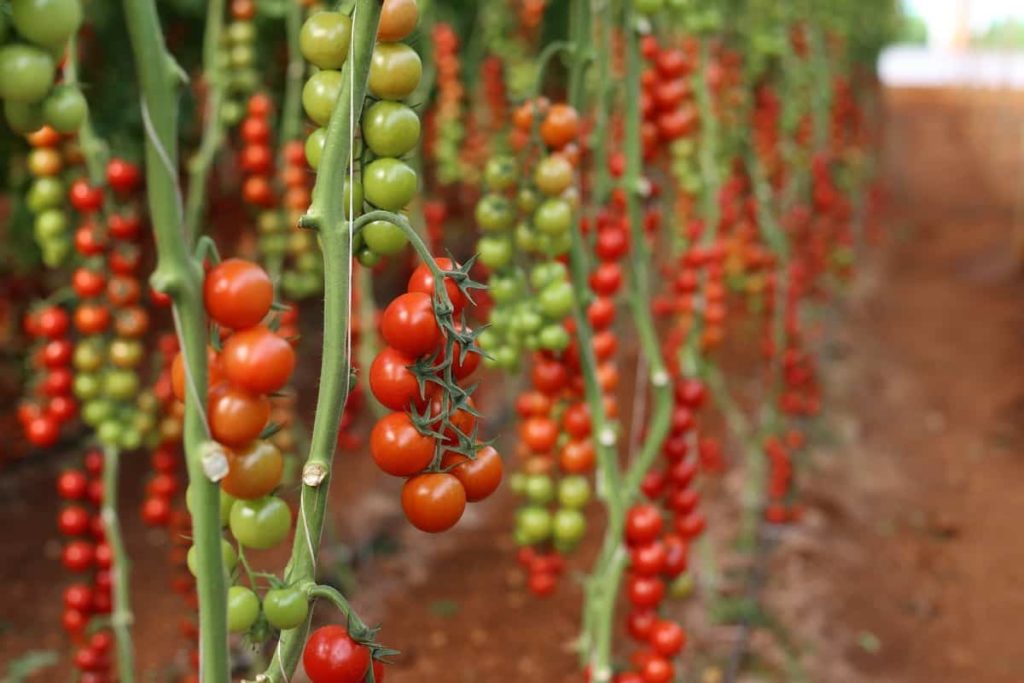
This potent fertilizer is frequently included in tomato fertilizer npk programs in order to guarantee that the levels of nutrients are balanced and that the plant will grow robustly.
Homemade Fertilizer Schedule for Tomato Plants
| Growth Stages | Weeks After Planting | Fertilizer Types | Application Rates | Frequency |
|---|---|---|---|---|
| Seedling Stage | 1–3 | Compost Tea | 1 cup per plant | Every 7–10 days. |
| Fish Emulsion (diluted 1:10) | 1/4 cup per plant | Every 10 days. | ||
| Vegetative Growth | 4–6 | Compost Tea | 2 cups per plant | Every 7 days. |
| Epsom Salt (Magnesium) | 1 tablespoon per gallon water | Every 2 weeks. | ||
| Crushed Eggshells (Calcium) | Sprinkle 1–2 tablespoons | Once at planting. | ||
| Flowering Stage | 7–9 | Compost Tea | 3 cups per plant | Every 7 days. |
| Bone Meal (Phosphorus) | 1 tablespoon per plant | Once at start of bloom. | ||
| Epsom Salt | 1 tablespoon per gallon water | Every 2 weeks. | ||
| Fruiting Stage | 10–12 | Compost Tea | 4 cups per plant | Every 7 days. |
| Fish Emulsion (diluted 1:5) | 1/2 cup per plant | Every 10 days. | ||
| Kelp Solution | 1 teaspoon per gallon water | Every 2 weeks. | ||
| Wood Ash (Potassium)* | Light dusting around base | Once during fruiting. |
Conclusion
You can provide your plants with the nourishment they need while simultaneously lowering the amount of damage you cause to the environment if you use these natural homemade tomato fertilizers in your gardening practice. Every recipe has its own set of advantages, which range from optimizing nutrient levels to improving the health of the soil.
You have a wide range of options to choose from when it comes to these fertilizers, whether you are wanting to improve the structure of the soil, address inadequacies, or just find alternatives that are better for the environment. As an illustration, over fertilized tomato plants have the potential to recover if the instructions for the recommended dose of fertilizer for tomato are adhered to with keen attention. While still adhering to environmentally responsible methods, you can still reap the benefits of abundant tomato harvests if you put in a little bit of effort and innovation. The phrases 8-32-16 fertilizer for tomatoes and homemade tomato fertilizer are only two examples of the myriad of available options for attaining the best possible results.




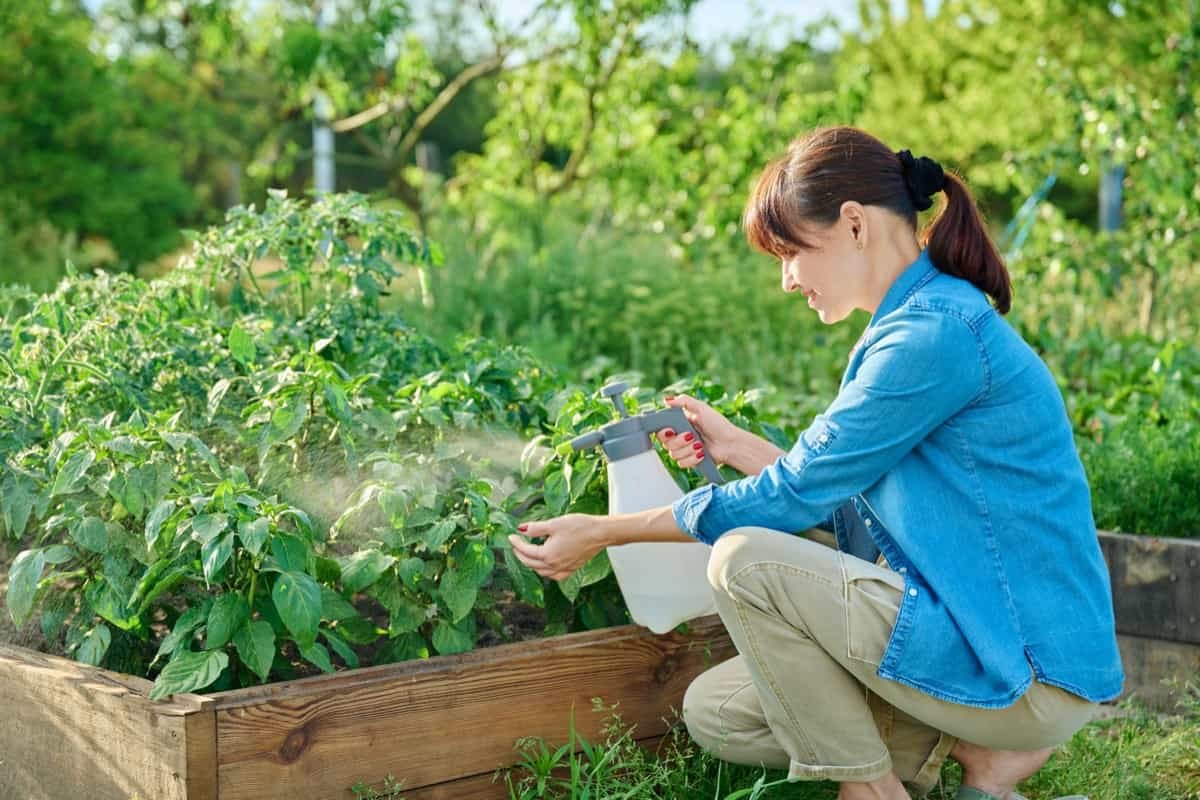




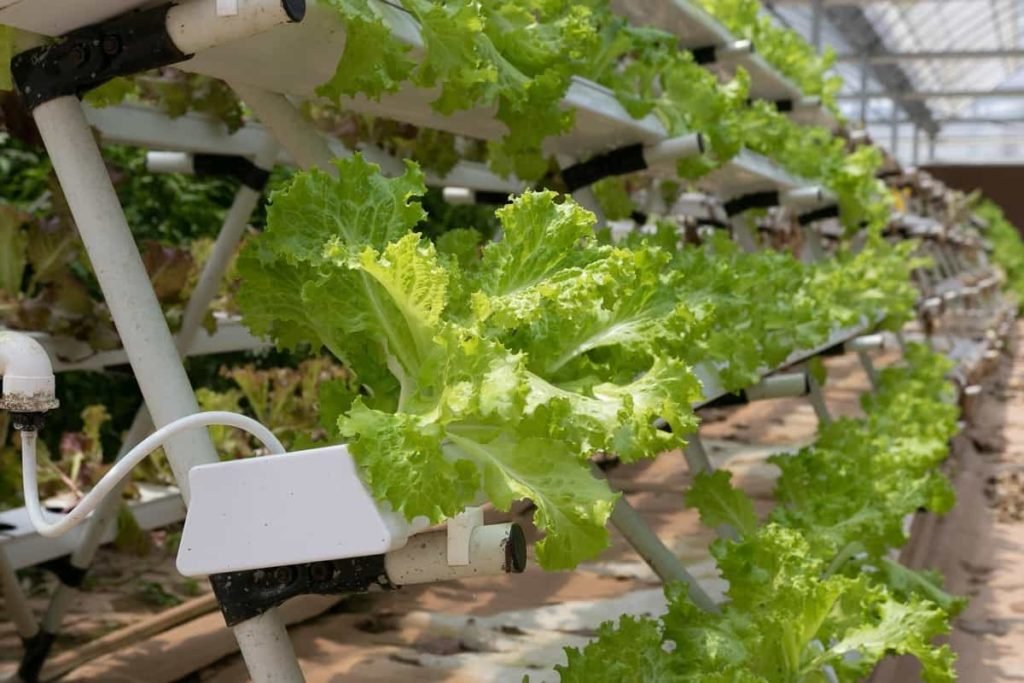





Leave a Reply